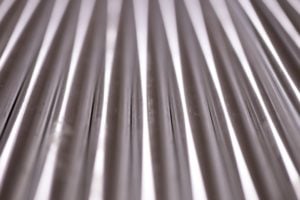 SSP stainless steel tubing uses highly restrictive standards for instrumentation applications.
SSP stainless steel tubing uses highly restrictive standards for instrumentation applications.
Quick Link
Click Here for Stainless Steel Tubing Products
Specifications
- Tubing Grade: 316/316L
- Tube OD sizes (Fractional): 1/4, 1/2, 5/8, 3/4, 1 in.
- Tube OD sizes (Metric): 6, 8, 10, 12, 16, 18, 20, 25 mm
- Wall Thickness (Fractional): 0.028, 0.035, 0.049, 0.065, 0.083, 0.095, and 0.109 in.
- Wall Thickness (Metric) 1.0, 1.5, 2.0, and 2.5 mm
- No harder than Rockwell 80
- Outer diameter (OD) +0.005, -0.000
- Burst pressure greater than 4X working pressure
- Capped tube ends
- OD, wall thickness, material, and pressure rating are printed on the lay line of the tubing
Better Stainless Steel Tube For Leak-Tight Tube Fitting Installation
SSP stainless steel tube is synonymous with safety and convenience for instrumentation tubing applications. Instrumentation tubing is designated according to its intended application, as well as by the type of mechanically attached fitting selected to join the tubing.
Instrumentation tubing is generally described as thin-walled tubing with strict requirements to deviation in diameter and wall thickness for leak-free operation on fluid transfer and pressure containment systems in process, oil & gas, natural gas, power, cryogenic, and performance-critical OEM industries.
It is counterproductive to purchase a high quality, mechanically attached tube fitting and use it with the cheapest available tubing. The quality of a mechanically attached tube fitting will be limited or compromised by the use of poor quality tubing.
Purchasing tubing to ASTM, DIN or other equivalent specifications is a good start, however, additional requirements should be considered. Most industry specification allow for rather wide variation in several important factors. Furthermore, these specifications don’t universally overlap thereby bringing into question the efficacy of tubing which is inside the specification controls limits of one specification, but not another.
So simply using an industry specification does not really mean that you have selected quality tubing.
Restricted Stainless Steel Tubing Tolerance Controls
To be sure of selecting tubing whose quality is matched to the performance of precision-made instrument tube fittings, SSP tubing has restricted tolerance controls over the following variables important to the safe and reliable operation of precision-manufactured instrument tube fittings.
Material and Method of Manufacture
SSP stainless steel tubing is generally Dual Grade where possible. Dual Grade means alloy with identical physical characteristics and only slightly different chemical characteristics are specification- controlled favoring the grade with the more refined chemical characteristics
Hardness
All instrumentation tube fittings require that the tubing be softer than the fitting material. While most metal tubing is restricted to a maximum hardness measured on the Rockwell hardness scale, SSP tubing has a lower restricted maximum hardness. This restricted tolerance control lowers installed cost by allowing the tubing to be more easily bent and installed.
Surface Finish
ASTM specifications are ambiguous on the subject of finishes. Instrumentation tubing should be free from nicks, gouges, and deep scratches which can interfere with proper sealing, particularly in gas service. SSP Tubes incorporate packaging and preservation standards which ensure that the tubing arrives in proper condition for use in instrumentation systems.
Roundness
ASTM A269 section 12.2 allows some thin-walled tubes to be produced with ovality of the tube twice the OD tolerance of ±.005 in. This degree of out-of-roundness would prevent the tubing from even inserting into the tube fitting properly. SSP Tubes has restricted this tolerance to better control ovality.
Dimensional – Wall Thickness & Outside Diameter
Typical ASTM tubing specifications permit various tolerances larger and smaller than the nominal OD rating (aka “plus” and “minus”). SSP Tubes has restricted minimum tolerances on the “minus” because it is more difficult to seal undersized tubing reliably.
Convenience
In addition to restricted tolerance control over important physical attributes of the tubing, SSP Tubes incorporate several factors to increase the installer’s convenience and system performance when using SSP Tubes.
Tube Caps
Plastic protective caps are installed onto the end of each SSP tubing to preserve internal cleanliness from the factory as well as to protect the end of the tube for maximum yield. Improperly protected tube ends must betrimmed prior to using the tube. Tube caps prevent wasted time and material associated with this practice.
MAWP on the Layline
SSP tubing improve system safety and increase installer and operator confidence by printing Maximum Allowable Working Pressure [MAWP] in psig and bar right onto the tube lay line. This feature provides an additional measure of safety against using an inadequately rated tube in service. MAWP are calculated using widely accepted ANSI /ASME B31.3 Process Piping specifications and code calculations.
Inspection and Certification
SSP tubes are fully heat and lot traceable. Chemical composition, yield, tensile strength, and elongation testing is performed. SSP Tubes pass functional tests including flattening, flaring, dimensional, and leak testing via Eddy current to ASTM A-450, as required. Finally, SSP Tubes are re-inspected using Energy-dispersive X-Ray Fluorescence (EDXRF) technology.
Inspection certificates and summarized test results are issued with each tube of different size or lot. Certification is always issued in compliance with EN 10 204 3.1 and ISO 10474.
-
ASTM A269, Standard Specification for Seamless and Welded Austenitic Stainless Steel Tubing for General Service
-
ASTM A213, Standard Specification for Seamless Ferritic and Austenitic Alloy-Steel Boiler, Superheater, and Heat-Exchanger Tube


